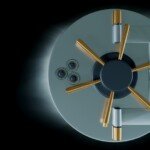The Unsung Heroes of Precise Processing: Unveiling the CNC G-code for better manufacturing
In the complex dance of modern manufacturing, metal meets precision on a microscopic level, and deceptively simple language curates every cut, drilling and contour: G code. At Greatlight, as an expert in advanced five-axis CNC machining, we see G-code as a basic blueprint for transforming digital design into tangible, highly resistant metal parts. Understanding its basics is not only for programmers; it is key for anyone involved in bringing complex components from concepts to reality. This guide breaks down the essentials.
What exactly is G code?
Think of G code as the direct command language for computer numerical control (CNC) machines. This is a standardized set of alphanumeric instructions that tell the machine Exactly How to move its cutting tool: where to go, how fast, what paths to take, and what auxiliary operations to perform (such as turning the spindle on or off). Each line of the G code represents the precise actions performed sequentially – linear cut, arc, drilling – making parts based on 3D CAD models. This is the definite connection between your design intention and our machining capabilities.
Decode G code alphabet soup
The G code command consists of letters (addresses), followed by numbers (values). Although many letters exist, the most common letters are:
- G code (preparation function): definition Sports type Or act.
G00: Quick positioning (fast, non-cut motion to one point).G01: Linear interpolation (linear cutting at the specified feed rate, e.g.G01 X50.0 Y25.0 F200).G02: Clockwise cycle interpolation (arc movement, clockwise).G03: Circular interpolation counterclockwise (arc movement, counterclockwise).G17,,,,,G18,,,,,G19: Specify the working plane (XY, XZ, Yz, respectively).G20/G21: Specify units (in/mm).
- M-codes (other features): control Machine functions.
M03: The spindle starts (clockwise).M04: Spindle starts (counter-clockwise).M05: The spindle stops.M06: Replace the tool (usually used in conjunction with automatic tool changers).M08: Coolant.M09: Coolant.M30: End of program and rewind.
- Other key addresses:
X,,,,,Y,,,,,Z: The target position coordinate of the axis.A,,,,,B,,,,,C: Rotation coordinates of multi-axis machines (key for 5-axis).I,,,,,J,,,,,K: Define the center point offset of the circular movement (G02/G03).F: Feed rate (speed of tool movement during cutting, for example, mm/min or mine/min).S: Spindle speed (RPM).T: Select the tool.N: Serial number (line number, usually optional).
Why G code becomes complex: Five-axis factor
As a leader Five-axis CNC machiningGreatlight utilizes machines that can move parts or tools simultaneously along five axes (X, Y, Z, and rotation A and B/C). This unlocks incredible features:
- Complex geometric shapes: In a single setup, intricate contours and undercuts are conventional.
- Top surface finish: Optimized tool orientation minimizes steps and improves finish quality on complex surfaces.
- Reduce the setting time: Complete parts that require multiple angles in one clamp can save a lot of time and improve accuracy (less redefinition errors).
However, this functionality adds complexity to the G code:
- Simultaneous exercise: Smooth programming, conflict-free simultaneous motion across 5 axes requires an expert understanding of kinematics, interpolation and tool center point (TCP) management.
- Kinematic Transformation: The tool path defined in the workpiece coordinate system accurately converts the motion of the machine’s rotation axis to the motion requires complex calculations (usually handled by CAM software).
- Avoid collisions: Browsing G-codes for complex tools, workpieces and fixtures when generating rotations requires meticulous simulation and verification – the cornerstone of the Greatlight process.
Beyond basic knowledge: precision, efficiency and huge advantages
It is not enough to have a G code. this quality Direct impact of code:
- accurate: Featured G-codes minimize unnecessary movement, ensure smooth transitions, and strictly control tool deflection and vibration – critical for micro-tolerances required in aeronautical, medical and energy applications.
- efficiency: Effective G-code minimizes air disassembly (non-productive motion), optimizes material shear depth and feed/speed, and logically performs sequence operations – directly reduces machining time and cost Quick custom processing.
- Tool lifespan: Optimized paths and feed/speeds prevent tool damage and extend life, thus contributing to reliable production.
This is Greatlight Professionalism and Advanced production technology shine. Our team is not only generating G code; we are designing it:
- Advanced Cam Mastery: We leverage cutting-edge CAM software to enable 5-axis tool path generation and post-processing tailored to our specific machinery.
- Kinematics expertise: A deep understanding of machine kinematics ensures that the G code accurately commands complex motion without errors.
- Simulation and verification: Each program is subject to strict simulations to eliminate collision risks and verify tool paths forward The metal is cut.
- optimization: Our focus is to generate the most efficient, highest quality code for your specific materials and geometry to ensure Best price performance ratio For you Custom precision machining.
Conclusion: G-code-a realistic approach to your design
The G code is the basic digital DNA of any CNC processing part. Its power lies in its simplicity, used for basic movements, but scaling to curate complex ballets with five-axis machining. Understanding its basics reveals the meticulous control and planning required to convert raw metal into precise components. High quality, optimized G-code generation is critical for complex geometry, tight tolerances and excellent finishes (especially for projects that are suitable for five-axis machining). That’s why it’s crucial to work with experienced, technology-driven manufacturers like Greatlight. We combine Advanced five-axis CNC machiningin-depth G-code expertise, and a commitment to efficient, high-quality production to professionally solve your metal parts manufacturing challenges, provide A true one-stop solution including post-processing and completion. Ready to turn your design into accurate reality? Contact Greatlight now for a quote about your custom parts.
Frequently Asked Questions about CNC G Code (FAQ)
-
Q: Do I need to learn G code using CNC computers?
- one: For operating a machine, basic familiarity can help with setup and troubleshooting, but detailed programming is usually done with CAM software. But understanding this is essential for programmers, engineers, and anyone who manages the manufacturing process. At Greatlight, this is our core expertise.
-
Q: How is G code generated?
- one: While simple parts can be written manually, complex parts (especially 5-axis) rely on computer-aided manufacturing (CAM) software. Engineers create tool paths in CAM based on 3D models. The CAM software then generates G code specific to the target CNC computer through A through A "Postprocessor."
-
Q: Are the G codes of all CNC machines the same?
- one: Mainly, but not completely. Core G and M code (like
G00,,,,,G01,,,,,M03) is standardized. However, manufacturers often add Custom M code,,,,, Machine-specific featuresand the difference Sports configuration (Especially important for 5-axis machines). This requires a compatible postprocessor Specific machine tool.
- one: Mainly, but not completely. Core G and M code (like
-
Q: What role does G code play in five-axis machining and three-axis?
- one: The three-axis G code mainly involves linear (x, y, z) motion. Five-axis G code adds complexity Rotation command (A, B, C) and management Simultaneous exercise Tools and workpieces on multiple axes. This requires more complex path calculations. Avoid collisionsand Movement awareness Ensure accuracy and safety.
-
Q: Why is optimized G code important?
- one: Optimized G-code for:
- accuracy: Minimize errors and ensure holding tolerances.
- Surface finish: Create smoother tool paths.
- efficiency: Reduce machining time and cost by eliminating wasted movement and optimizing cutting parameters.
- Tool lifespan: Prevent tool breakage and excessive wear.
- Machine Health: Avoid collisions and excessive stress. Greatlight emphasizes code optimization for all our precise projects.
- one: Optimized G-code for:
-
Q: What are the main challenges in generating G codes for five-axis machining?
- one: The main challenges include accurate calculations Complex tool directions,make sure Smooth and coordinated motion On all axes, Prevent collisions Use parts, fixtures or the machine itself, to manage Kinematic singularity (The position where the axis motion becomes uncertain) and generates effective paths for greatly increasing potential freedom of motion.
- Q: Why do I work with a CNC machining project involving complex geometric shapes?
- one: Gremplight specializes in overcoming challenges High precision, complex five-axis machining. Our Investment Advanced equipment and deep Programming expertiseEspecially when generating and optimizing complex G-codes, efficient, accurate and reliable production of the most demanding metal parts is ensured. Our One-stop post-processing and commitment Quick customization Provides seamless, high-quality solutions that you can trust.

















